Kitchen cabinets, bedroom closets, utility room, coat closet, and the long storage wall in the living areas. This design always had a great amount of storage for a small house.
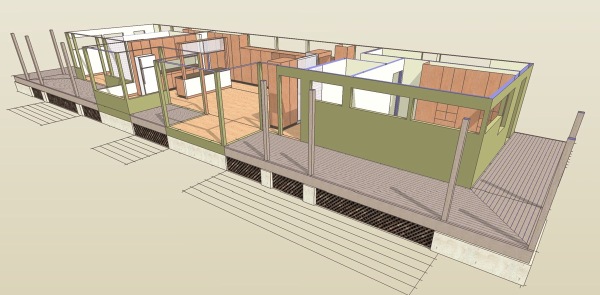
Technorati Tags: house plans, modern design, modern house, Plat House

Technorati Tags: house plans, modern design, modern house, Plat House
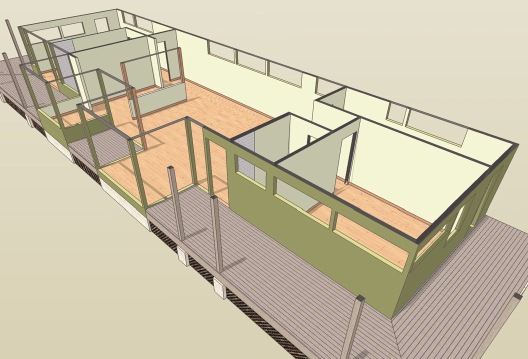
Technorati Tags: house plans, modern design, modern house, Plat House
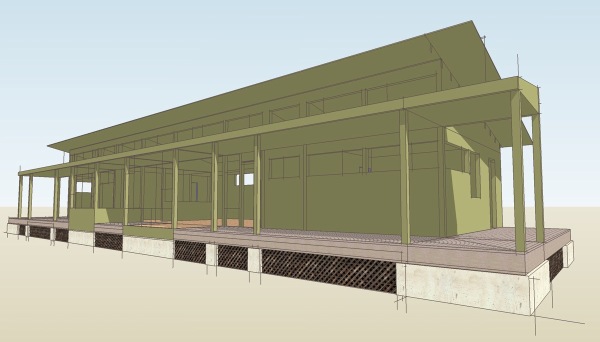
Technorati Tags: house plans, modern design, modern house, Plat House
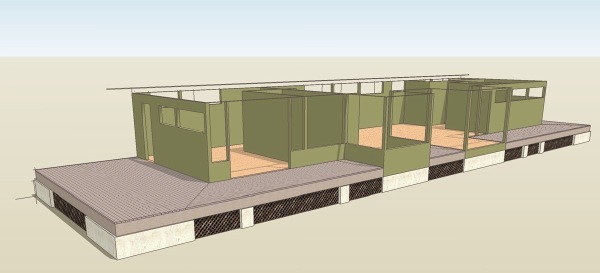
Technorati Tags: house plans, modern design, modern house, Plat House
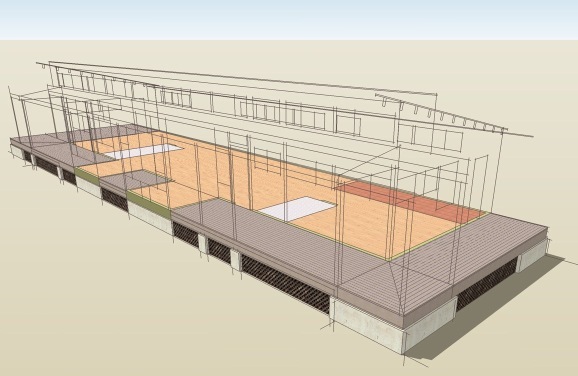
Technorati Tags: house plans, modern design, modern house, Plat House
According to the easy explanation that was advanced later the movement developed as the application of two principles: the abandonment of historical styles, and ... the use of "fitness for purpose" as a criterionThat in a nutshell are the two maxims of less is more and form follows function. He goes on
There are whole decades in the second half of the nineteenth century in which no architectural work of any significance is encountered. Does that parallel housing in the US? Eclecticism (historic) smothered all creative energy.Did he write that last week about american suburbs? No, it was 1890. Curious.
Dissatisfaction with this almost universal state of affairs reached its peak around 1890 and explains that Dutch architect Berlage was denouncing the prevailing architecture as "Sham architecture; ie., imitation: ie., lying" and quotes Our parents and grandparents as well as ourselves have lived and still live in surroundings more hideous than any known before . . . Lying is the rule, truth is the exception"
The smoldering hatred of eclecticism came to a head in Europe with startling suddenness. . . Ambition revives and brings with it courage and strength to oppose those forces which had kept life from finding its true forms.In a more personal account he describes his interview with Henri van de Velde who described the situation as:
The real forms of things were covered over. In this period the revolt against the falsification of forms and against the past was a moral revolt.He goes on to describe van de Velde's experience seeking a home for his family:
I told myself - this was in 1892 - that I would never allow my wife and family to find themselves in immoral surroundings." But at that date everything that one could by on the open market was smothered under the mensonge des formes (lie of the forms.)I'm not making this up! He goes on to describe the house that van de Velde finally designed for his family, and which launched his entry into architecture
It showed a remarkable freedom in the treatment of the roof and in the way in which the windows were cut out to meet the special requirements of each room. The revolution this house provoked when it was completed in 1896 derived from its pronounced simplicity, in strong contrast with the over-fanciful facades to which people were accustomed.It would be hard to confuse van de Velde's house with modern architecture, but in its context it was radically minimal.
sadly
Posted by Matt_Arnold at 04-04-2004 02:16 PM
Sadly, the parallels are great, here, a hundred years later. But even more sadly, to a very large degree in American culture, money trumps morality every trip of the train. People are swayed by financial arguments, when they only nod sadly in agreement with arguments that tell them what is right.
But we are a nation of sub-cultures, and I believe the modernist subculture is growing rapidly, especially among environmentally-minded people.
Architecture and morality?
Posted by Rous at 05-03-2004 07:03 PM
It is amazing the degree to which the 1890s parallels the 1990s regarding architecture and the minority opinion that the status quo is not good. As much as I want to agree that the current state of housing design, with all its phoniness, is immoral, I have trouble hanging that word on something like aesthetics. Isn't it a bit like saying that someone who dresses poorly, or wears too much makeup is immoral? I generally try to reserve that word for actions in which others are harmed against their will. For example, I do think that SUVs are immoral, but that has to do with the cost those vehicles place on others (increased damage to other vehicles in an accident and increased pollution).
Although I do not know if it is true, I would guess that most people, if asked, would say that phoniness (in general) is not a good thing. However, I wonder how much people really believe it. Few peope these days put Continental tire kits on their cars but there is a market for fake convertible tops. It used to be that people tried hard to keep others from knowing about cosmetic surgery, but now it is more of a status symbol. People seem to fully buy into the new housing design and sprawling development, but does that indicate immorality or just bad taste? I think it is possible to make a better argument for the immorality of post-war suburban development with its increased reliance on cars, gasoline, subsidized roads, segregation of social groups (by race and income), etc.
modernism moral? or a symptom of morality?
Posted by lavardera at 05-03-2004 07:50 PM
I need to examine the idea more in another essay as I have been worrying over the questions you raise. I mean it sounds zealous to accuse somebody of being immoral because they don't like modern design? No, thats not what the this is about. Its the leap from a context of blatant contradictions, to bad choices - and somehow it becomes an easier leap. Phony old houses are the norm, and thats ok, not just ok, its the ideal, the aspiration, an obvious lie, from here the big vehicle, that is supposed to be rough and tough yet never leaves a paved road, another ideal, aspiration, another obvious lie, one that more people would declare harmful, it uses more fuel than it needs to, one that is a threat to smaller more efficient vehicles. But that was an easy leap. Where do we go from there? The crisis in corporate americas scandals? I think there were many other small leaps to get to that, and I'm sure each was easy.
Its not that somebody is immoral if they don't like modern design. But perhaps the modernist is in someway more resistant to this immoral chain reaction.
Technorati Tags: modern design, modern house
Technorati Tags: house plans, modern design, modern house, Steel Case House
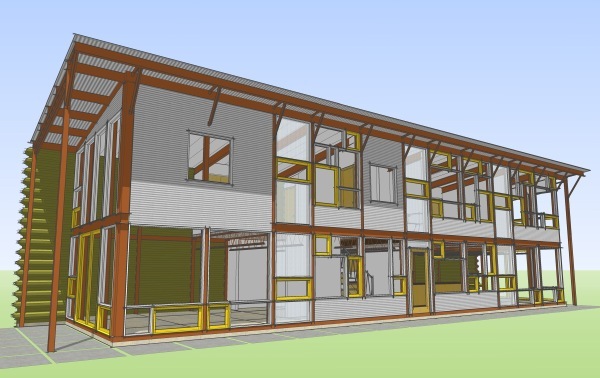
Technorati Tags: house plans, modern design, modern house, Steel Case House
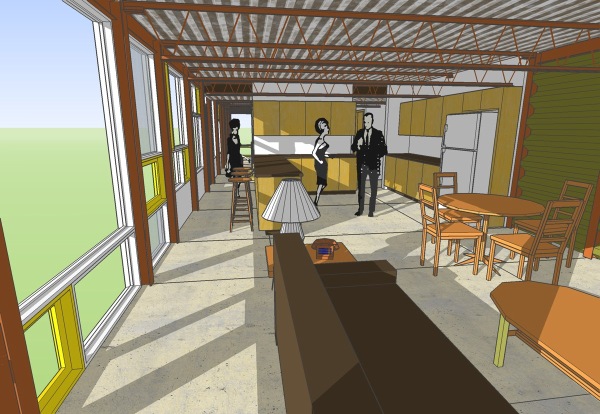
Posted by Rous at 05-03-2004 05:55 PM
As a big fan of CSH8, when I first saw the Steel Case house I loved it, but wondered if I would like it more if there was more steel in it. Now I have seen it both ways and must say I prefer the original version with CMU and wood floors. Maybe it is the Sketch-up images, but the steel that replaced the CMU seems a bit too heavy and industrial for the rest of the house. One of the great things, IMO about the Eames house is how it looks so light and airy. As strange as it may seem, I think the CMU version gets at that more than the steel version.
Posted by lavardera at 05-03-2004 06:29 PM
All good observations Jeff. The original version's wood floors mediate the hardness of the cmu wall and the steel frame. The metal version's steel panel wall and concrete slab floors leaves it without much warmth. I leave it to you to decide which version appeals to you - the extreme that each represents is a useful sounding board for sizing up your own preferences. Here in the north east I would tend towards the original (probably the upcoming SIPs version which will trade out the CMU wall for an 8" wall of insulated panels.) Its telling that there have been serious inquiries about the metal version for areas of CA subject to wild fires.
Technorati Tags: house plans, modern design, modern house, Steel Case House
Technorati Tags: modern design, modern house
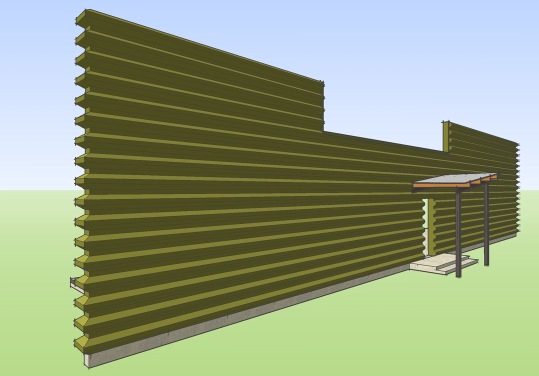
Technorati Tags: house plans, modern design, modern house, Steel Case House
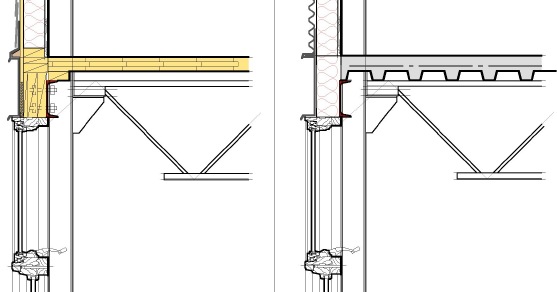
Technorati Tags: house plans, modern design, modern house, Steel Case House
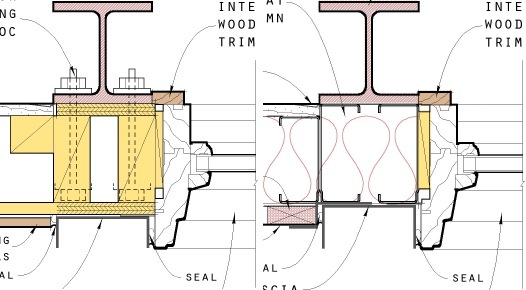
Technorati Tags: house plans, modern design, modern house, Steel Case House
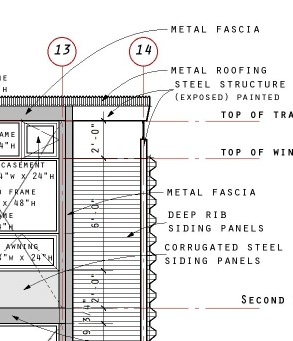
Technorati Tags: house plans, modern design, modern house, Steel Case House